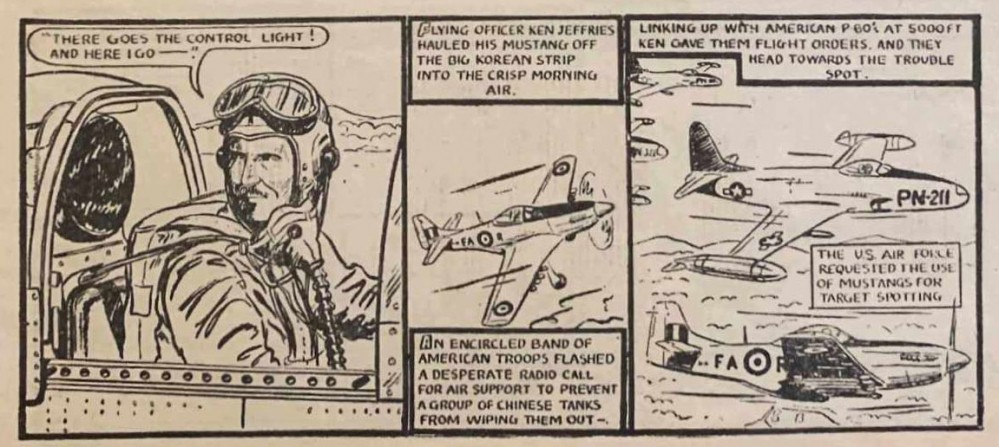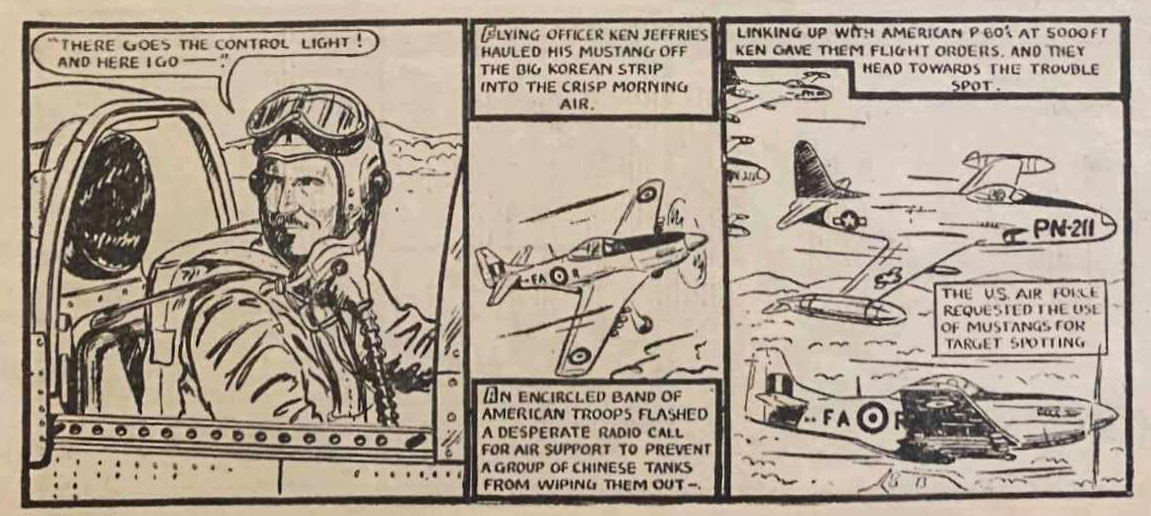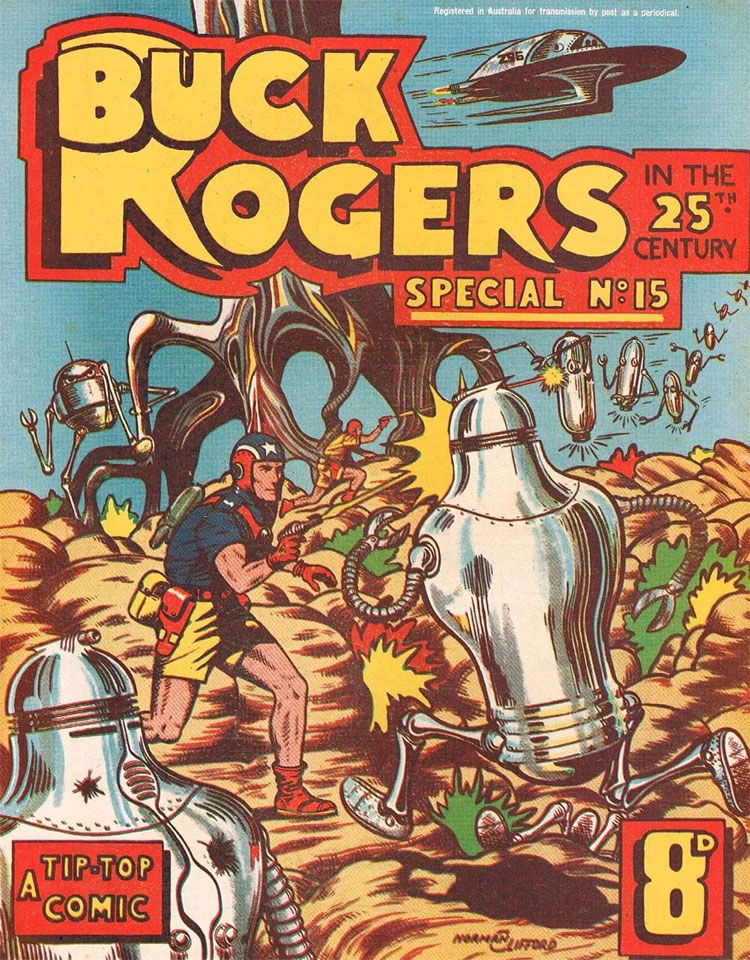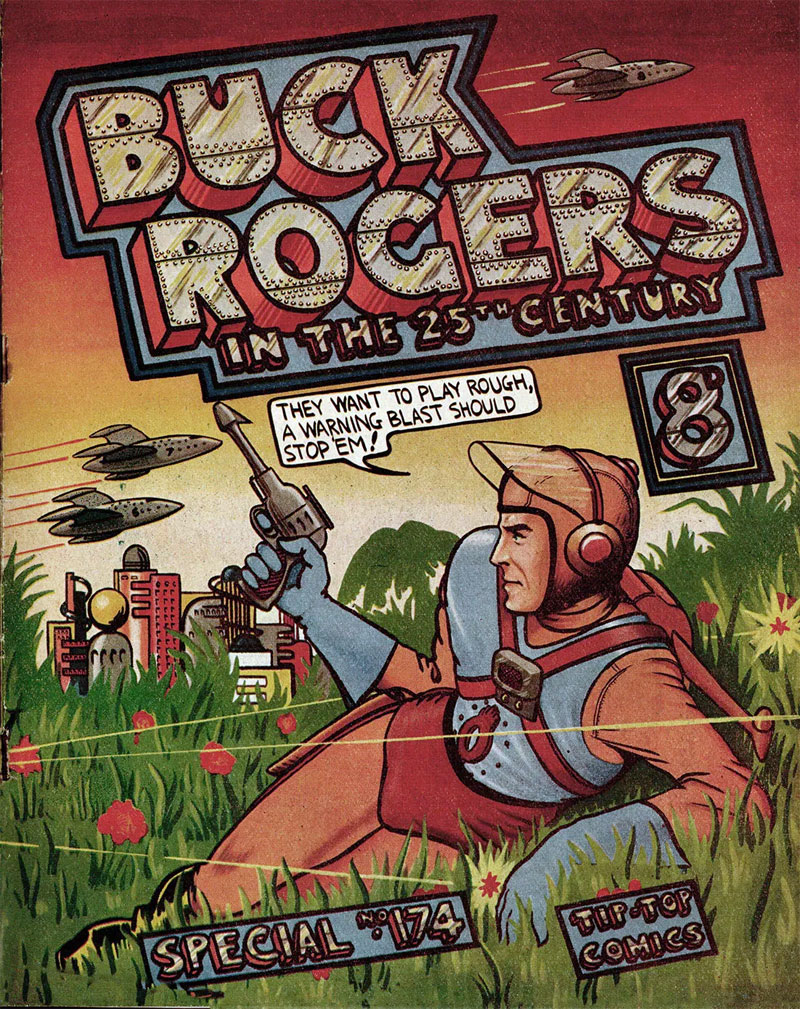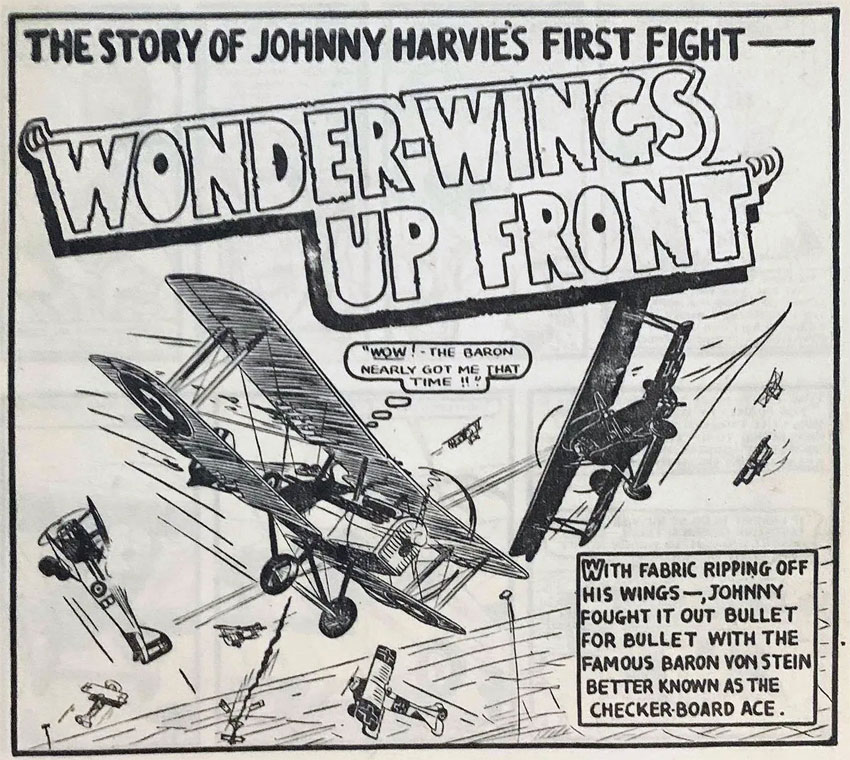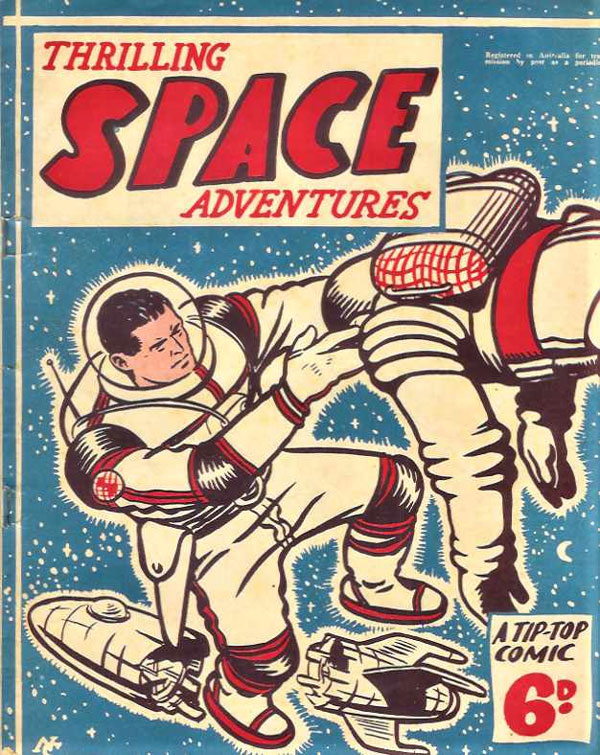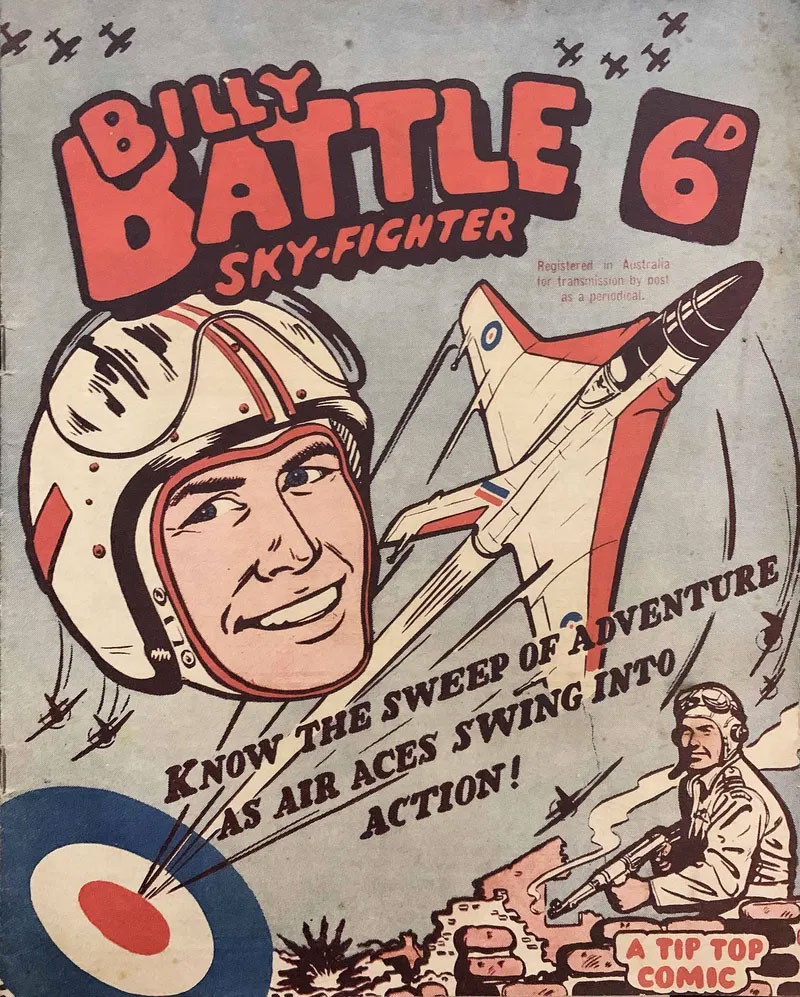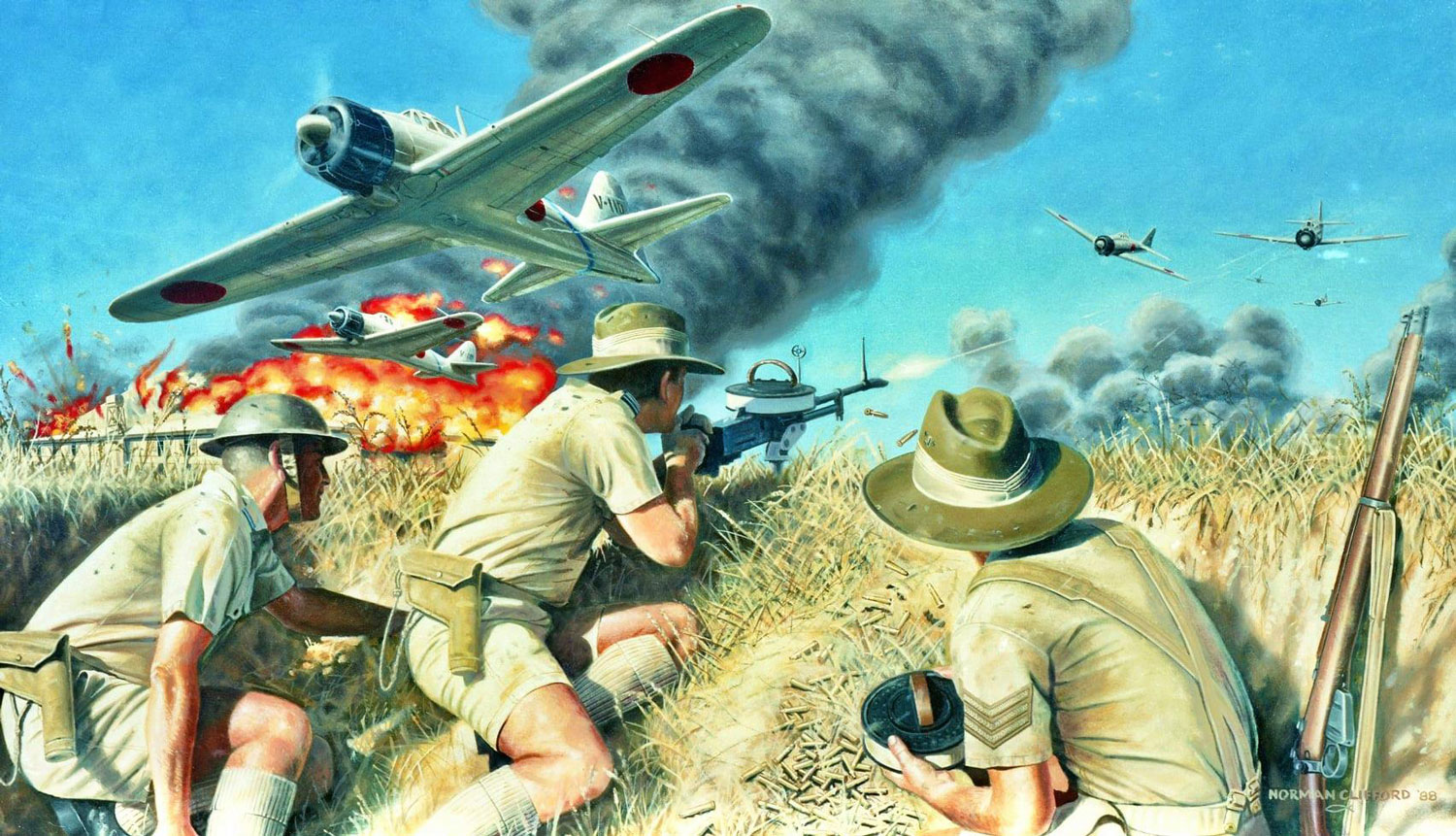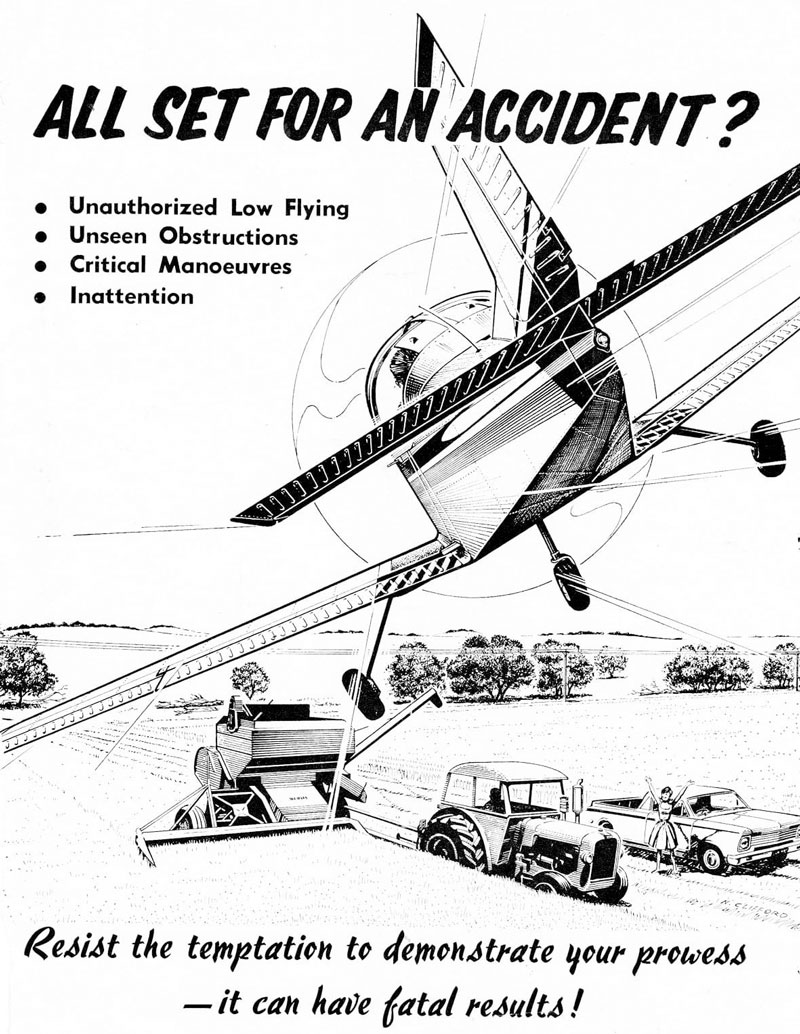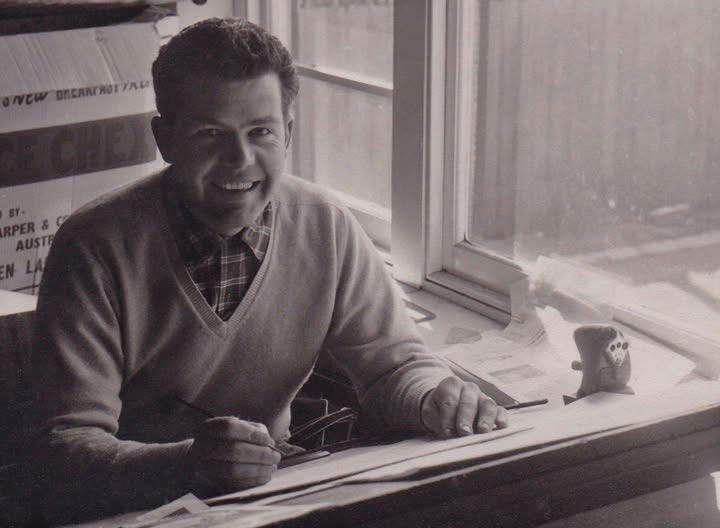'Korea' (Sky Demons Special #1).
Norman Clifford, or Norm Clifford, was an Australian illustrator, painter and comic artist. In the late 1940s and early 1950s, Clifford drew the aviation series 'Sky Demons', which became the best-selling comic book in Australia for a while. Most of his other comic book series, like 'Daredevil Comic', 'Wonder Wings', 'Billy Battle' and 'Thrilling Space Adventures', were also aviation-themed. Two odd-one outs are his children's comics 'The Olympixies' and 'Adventures in Tiny Land' (1956-1957) in New Idea Magazine. From the 1960s on, Clifford devoted his career to making realistic illustrations and paintings, glorifying pilots, planes, aerial battles and well-known aviators from World War I, II and the Korean War. Interestingly enough, Clifford has never been an aviator himself, his only experience in the field being as an aircraft assembly employee.
Early life and career
Norman Clifford was born in 1927 in Footscray, Australia. From a young age, he enjoyed reading comics, especially the American newspaper comic 'Buck Rogers in the 25th Century' by Dick Calkins. As a teenager, he started working on the assembly line for Boomerang and Mustang airplanes at the Commonwealth Aircraft Corporation at Fisherman's Bend, where he spent three years. A lifelong airplane enthusiast, he wanted to become an aviator, so when he turned eighteen, he applied for the Royal Australian Air Force. Even though he passed the aptitude test and the required medical examinations, World War II was almost over, so no new aviators were in demand by the time Clifford turned eighteen. The only available job was for a radio telegrapher. However, Clifford was very bad in math, so this wasn't an option. In an impulsive act, he went directly to a RAAF office, asking two senior officers whether he could become a rear gunner. One bluntly rejected him, but the other asked him a simple arithmetic question: "What is 9 x 99?”. Unable to give the correct answer, he left again. A few days later, he received two contradicting letters. One was from the RAAF, requesting his presence at one of their training depots in Shepparton, while the other came from the Manpower Board, refusing to release him from his job at the Commonwealth Aircraft Factory.
Later in life, Norman Clifford made cover illustrations for Australian 'Buck Rogers' comic books.
After his education at Tottenham State School, Norm Clifford started an art course at the Royal Melbourne Institute of Technology (RMIT University) in Melbourne, but dropped out after one year. At age 20, he tried his luck as a commercial illustrator, but due to lack of experience, he started working in the technical department of Robertson and Mullens Bookshop in Elizabeth Street, Melbourne. For three years, his job was to keep the office clean. One day, he noticed an original manuscript in the dustbin, namely that of 'High Adventure' by Captain A.H. Cobby, a 1942 book Clifford had read many times as a teenager. A secretary allowed him to take it home with him. In 1981, Clifford had this manuscript reprinted with redesigned artwork, published by Kookaburra Publications.
At age 24, Clifford started to work with the photographer John Warlow, who ran a studio in Collins Street. There he learned everything about developing, printing, retouching and print coloring. He also met his future wife Shirley there.
'Wonder-Wings Up Front' (Wonder-Wings Comic #1, 1955).
Comics career
While working at the photographic studio, Clifford drew comics in his spare time. One story, 'The Air Strip', eventually became a complete comic book. Since he was self-taught, the artwork was "a bit rough around the edges", as Clifford described it himself. The plot was improvised as he went along. Scenes tended to end when he literally reached the end of the page. He had no clue that professional comic artists wrote their plots and sketched their lay-outs beforehand. Since he loved drawing airplanes so much, he put more emphasis on showing off the technical aspects, rather than focus on his protagonists. As an inside joke, he modelled his main character after his employer John Warlow.
Much to Clifford's surprise, this rudimentary comic was accepted for publication by Bill Bednall of Southdown Press and its Tip-Top Comics imprint. He only changed the title to the snappier-sounding 'Sky Demons' (1953), while presenting the comic as the work of an artists' collective instead of a one-man effort. A few weeks later, Clifford was in for another surprise when Bednall informed him that 'Sky Demons' had actually out-sold all other comics on the Australian market, even those of Disney and Timely (nowadays Marvel) Comics. For the first time in his company's history, there were even fan letters from readers, asking for more comics. Reflecting on this achievement, Clifford attributed it to the popularity of World War II movies in cinemas and the ongoing Korean War (1950-1953) at the time.
'Thrilling Space Adventures' and 'Billy Battle, Sky-Fighter'.
Clifford instantly started drawing more 'Sky Demons' stories, with his graphic skills improving along the way. Since he wasn't good at lettering, his fiancée Shirley took this job upon her. Southdown Press was also able to secure the publishing rights for local versions of the American aviation comic 'Buck Rogers', allowing Clifford to draw covers for reprints of these stories. Between 1956 and 1957, Norm Clifford additionally drew the children’s comics 'Olympixies' and 'Adventures in Tiny Land' for the children’s section of New Idea magazine, also published by Southdown. Although Clifford later became an illustrator and painter, his heart was always in comics, since these were illustrated stories.
Unfortunately, by the mid-1950s, television made its entrance in Australia. As more people bought TV sets, comic readership went downhill. Bednall decided to terminate 'Sky Demons' after six issues and three specials, and asked Clifford to launch new comic book titles. In the following years, during the mid-1950s, he drew various new aviation comics like 'Daredevil Comic' (three issues), 'Wonder Wings' (two issues), 'Billy Battle, Sky-Fighter' (one issue), 'Thrilling Space Adventures' (one issue) and some story art for the holiday-themed comic 'The Christmas Comic' (1958). Still, none quite caught on and by the end of the decade, Southdown Press closed down its comic production.
Attack on Darwin, 19 February 1942 (painted in 1988).
Illustration and painting career
Forcibly retired from the comics industry, Norm Clifford became a graphic designer for various advertising agencies in Melbourne. He made advertising illustrations for the first K-Mart store in Burwood, Melbourne. In the 1960s, he drew for the Aviation Safety Digest and livened up several books, magazines and posters. In 1971, Clifford built a large studio at the rear of his home in Glen Waverly, Melbourne, where he devoted most of his spare time to painting historic military aviation scenes and portraits of military veterans. Since many were commissioned by the Australian army, government services or specialized magazines, he wanted every detail to look precise and authentic. He used photographs from books or newspapers for reference material and often made his relatives dress up in actual military uniforms. If Clifford couldn't get weaponry or access to planes firsthand, he would craft mock-versions.
Graphic contributions
In 1981, Clifford illustrated Captain Arthur Henry Cobby's autobiography 'High Adventure’ (Kookaburra Technical Publications, Kookaburra). In 1989, he painted a poster to commemorate the last Mangalore Air Show that year, an annual event held by the Sport Aircraft Association of Australia. In 1996, Clifford was commissioned to create a series of military aviation stamps for the Australian Postal Corporation, which were released to the public on 26 February of that year. In 1998, the aircraft manufacturer Hawker de Havilland Australia commissioned him to pay a graphic tribute to the company's founder Harry Hawker, collected as 12 individual paintings published in calendar form. Norm Clifford also painted covers for Macarthur Job's books on aviation safety, 'Disaster in the Dandenongs' (2008) and 'Into Oblivion' (2010). In 2016, a series of pre-paid envelopes with his artwork was released by the Australian Postal Corporation. In 2018, he compiled a book about the history of the Australian Flying Corps.
Recognition
On 6-7 August 2022, Norman Clifford received the Ledger of Honour, as part of the Comic Arts Awards of Australia. He received the award together with another veteran, Monty Wedd, and both were inducted in the Australian Comics Hall of Fame.
Final years and death
After suffering a minor stroke, Clifford was no longer able to draw or paint. Through his Facebook page Norman Clifford Aviation Artist, Clifford and his daughter Vicki Sach kept his artwork under public attention. His daughter also set out to track down as many original copies of her father's comics as possible, since she was helping him write his autobiography. In 2018, Norm Clifford and Lance Halvorson co-authored 'The Australian Flying Corps in The Great War' (1914-1918)'. On the night of 27 July 2025, Norman Clifford passed away at his aged care facility in Glen Waverley. One of the last remaining veterans of the Australian post-war comic book industry, he was 98 years old.


